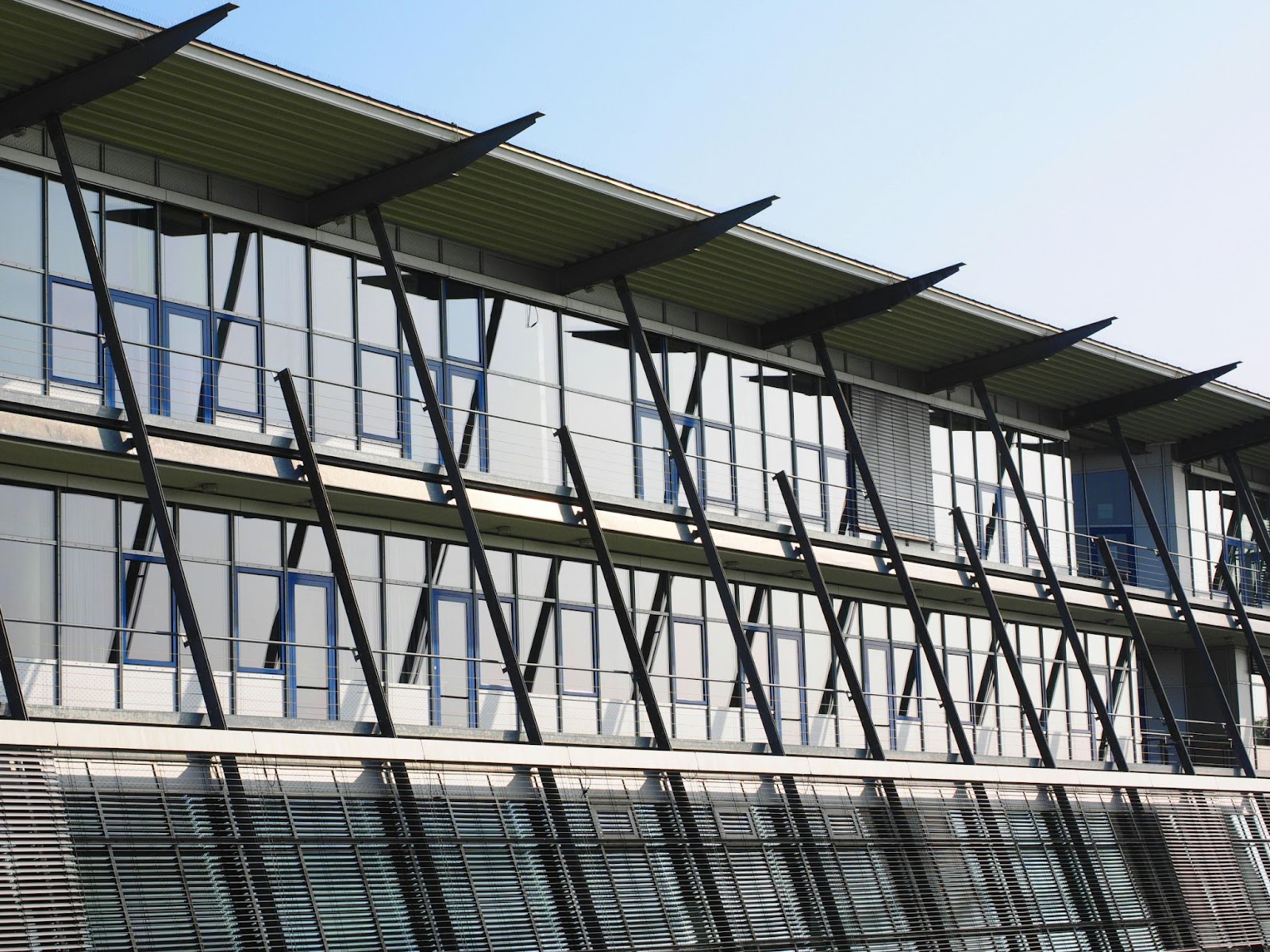Dive into the intricate world of radiation rooms and uncover the vital significance of radiation shielding in modern medical imaging.
Embark on a captivating journey and step inside the dynamic realm of radiology rooms. These specialized spaces within healthcare facilities serve as the epicenter of cutting-edge medical imaging, unraveling the mysteries concealed within the human body. Radiology rooms are meticulously designed hubs where science and technology converge to provide crucial insights for diagnoses. In this regard, radiation shielding is of immense importance because it ensures both precision and safety. Delve deeper to find out the necessity and marvels of shielding.
What Components Make Up Radiology Rooms
Radiology rooms are specialized spaces within healthcare facilities dedicated to conducting various medical imaging procedures. These rooms house a variety of essential components, each playing a crucial role in ensuring the efficiency, accuracy, and safety of diagnostic imaging.
X-Ray Machines And Equipment
At the core of any radiology room are the X-ray machines and associated equipment. X-ray machines, such as fluoroscopy units and computed tomography (CT) scanners, generate images by exposing the patient to ionizing radiation. These machines are pivotal in diagnosing a wide range of conditions, from fractures to internal organ abnormalities. Regular maintenance and adherence to safety protocols are imperative to ensure the optimal performance and safety of these devices.
Control Consoles And Workstations
Control consoles and workstations are command centers where radiologic technologists operate and control imaging equipment. These interfaces allow precise adjustments of imaging parameters, exposure settings, and other critical factors during the imaging process. The user-friendly design of these consoles enhances workflow efficiency and contributes to the overall quality of diagnostic images.
Patient Positioning Devices
Patient positioning devices are essential tools for achieving accurate and consistent imaging results. They help ensure that patients are correctly positioned for imaging procedures, minimizing the need for repeated scans and reducing radiation exposure. Proper alignment and immobilization contribute to the clarity of images and aid in the diagnostic accuracy of medical professionals.
Imaging Receptors
Imaging receptors capture the radiation that passes through the patient and convert it into digital or analog images. Common receptors include X-ray film, computed radiography (CR) plates, and digital radiography (DR) detectors. The choice of imaging receptor depends on the specific requirements of the imaging procedure and the desired image quality.
Room Layout And Design
The layout and design of the radiology room play a significant role in optimizing workflow, ensuring safety, and accommodating various imaging modalities. Considerations include the arrangement of equipment, shielding to contain radiation, and the overall ergonomics of the space. A well-designed radiology room contributes to the efficiency of the imaging process and enhances the comfort and safety of both patients and healthcare professionals.
Radiation Monitoring Devices
Radiation monitoring devices are crucial for ensuring the safety of healthcare professionals and patients. These devices measure and track radiation exposure levels in real-time, alerting personnel to potential hazards. Dosimeters worn by staff provide valuable data to ensure that radiation exposure remains within acceptable limits, contributing to a safe working environment.
Ventilation Systems
Ventilation systems in radiology rooms are designed to maintain air quality and minimize the accumulation of airborne contaminants, including potential radioactive particles. Proper ventilation helps create a safe environment for both patients and healthcare providers by reducing the risk of exposure to harmful substances.
Why Is Radiation Shielding Necessary In Radiology Rooms?
Radiation shielding is imperative in radiology rooms to safeguard the well-being of both healthcare professionals and patients during diagnostic imaging procedures. This protective measure involves the use of materials, such as lead, to contain and absorb ionizing radiation, preventing its harmful effects.
Protection Of Healthcare Workers
Radiation shielding, particularly lead shielding, acts as a critical barrier to protect healthcare professionals from direct exposure to ionizing radiation. Lead aprons and shields worn by medical staff serve as personal protective equipment, minimizing the risk of radiation-induced health issues. This proactive measure underscores the commitment to ensuring the safety and health of those working in radiology settings.
Minimization Of Scatter Radiation
Shielding materials, including lead-lined walls and barriers, play a vital role in containing and absorbing scattered radiation. This containment is essential to minimize unintended exposure to healthcare professionals within the radiology room. By controlling scatter radiation, the risk of potential health hazards is reduced, aligning with the principle of maintaining a safe and controlled environment for medical personnel.
Patient Safety
Radiation shielding is instrumental in focusing the X-ray beam precisely on the targeted area, contributing to patient safety. By using shielding materials, unnecessary exposure to surrounding tissues and organs during diagnostic procedures is minimized. This ensures that patients receive the necessary diagnostic information while limiting radiation exposure to non-targeted areas, promoting overall patient well-being.
Compliance With Regulatory Standards
Effective radiation shielding is a crucial component in meeting and adhering to international and national regulatory standards. Healthcare facilities have a legal and ethical responsibility to implement measures that comply with established guidelines for radiation safety. Incorporating proper shielding not only protects individuals within the radiology room but also upholds a broader commitment to ethical medical practices and regulatory compliance.
Risk Reduction For Occupants In Adjacent Areas
Shielding is designed to prevent the escape of radiation beyond the radiology room, reducing the risk of exposure for individuals in adjacent areas. This holistic approach to safety ensures that not only those directly involved in radiological procedures but also occupants in surrounding spaces are safeguarded from potential radiation hazards. It reflects a comprehensive commitment to creating a secure environment within and around the radiology facility.
Enhancement Of Diagnostic Accuracy
Radiation shielding contributes to creating a controlled environment free from interference, leading to optimal imaging conditions. This controlled environment enhances diagnostic accuracy by minimizing external factors that could distort imaging results. Clear and accurate diagnostic images are essential for improving the precision and reliability of medical diagnoses, emphasizing the integral role of radiation shielding in maintaining high standards of healthcare practice.
What Regulatory Standards Must Radiology Rooms Adhere To?
Radiology rooms operate within a stringent framework of regulatory standards to ensure the safety, efficacy, and ethical practice of diagnostic imaging. Compliance with these standards is crucial for maintaining high-quality healthcare practices.
ASTM C1036
ASTM C1036, also known as the “Standard Specification for Flat Glass,” plays a pivotal role in building construction and radiological equipment. This standard, published by ASTM International (formerly known as the American Society for Testing and Materials), outlines specifications for the quality, dimensions, and appearance of flat glass. The standards ensure that the manufacturing process results in uniform, reliable products that meet precise safety and performance criteria.
DD-G-451d
The Defense Department Glass Specification DD-G-451d outlines minimum requirements for glass used in government facilities. This standard covers not only the physical properties of flat glass but also addresses safety concerns such as impact resistance and fire resistance. Adherence to this standard is essential for ensuring the safety of individuals within these facilities and maintaining secure environments.
International Council On Radiation Protection (ICRP)
The International Council on Radiation Protection (ICRP) is a globally recognized body that establishes standards for radiation protection and risk assessment. The ICRP’s mission is to prevent the harmful effects of radiation exposure and ensure the safe use of sources of ionizing radiation.
National Council On Radiation Protection And Measurements (NCRP)
If you are working with radiation-producing equipment or materials, it is important to follow the guidelines set by the National Council on Radiation Protection and Measurements (NCRP). This organization provides recommendations for safe levels of exposure to ionizing radiation, as well as guidance for emergency response and occupational protection.
Liberty Shielding Provides You With The Best Radiation Shielding: Here’s Why!
At the forefront of radiation shielding technology, our commitment at Liberty Shielding is rooted in deep expertise and innovative approaches. We pride ourselves on staying ahead in advancements, ensuring our solutions are not just cutting-edge but also rigorously quality-tested. Adhering to stringent standards, our equipment not only complies with regulatory benchmarks but also sets new industry benchmarks for reliability and safety.
Customer satisfaction is at the core of our success, and real-world stories from our clients attest to the efficacy of our shielding solutions. From medical facilities to industrial applications, our shielding technology has consistently delivered exceptional results, reducing risks and ensuring the safety of both professionals and patients.
Our technical specifications demonstrate the precision and customization options embedded in our equipment. Tailored to meet the unique needs of each client, our shielding solutions provide not just protection but seamless integration into diverse environments.
Liberty Shielding’s Pioneering Solutions In CT Environments!
Liberty Shielding emerges as a trailblazer in CT environments, showcasing unparalleled expertise in radiation shielding technology. With a commitment to innovation and staying ahead of advancements, our solutions exemplify top-tier safety and reliability standards. Rigorous quality assurance processes underscore the effectiveness of our cutting-edge equipment. For those seeking customized solutions, our technical specifications highlight precision and versatility. Explore our revolutionary shielding products here to experience the forefront of safety and innovation.




